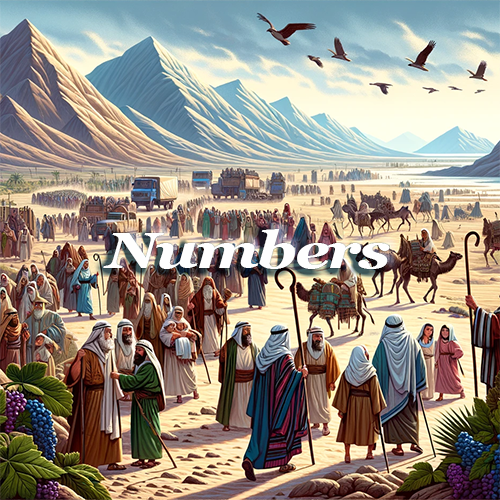
The Book of Numbers is the fourth book of the Hebrew Bible and the Old Testament of the Christian Bible, an integral part of the Torah or Pentateuch. The title "Numbers" originates from the Greek translation, the Septuagint, referring to the two censuses of the Israelites recorded in the book; however, its Hebrew name, "Bemidbar" (במדבר), means "In the Wilderness," reflecting its setting during the Israelites' wanderings in the desert (Milgrom, 1990).
Authorship and Date: Traditionally, Moses is credited with the authorship of Numbers as part of the broader Mosaic authorship attributed to the Bible's first five books. However, modern scholarship suggests a complex composition history involving multiple authors and editors over centuries, with final redaction possibly occurring in the post-exilic period (6th century BCE) (Friedman, 1987). This view is supported by linguistic, stylistic, and thematic analyses that indicate a long period of oral and written transmission.
Setting: The narrative setting of Numbers spans the period of the Israelites' wanderings in the wilderness, beginning in the second year after the exodus from Egypt and concluding as they prepare to enter the Promised Land, covering a span of about 38 years. This setting serves as a backdrop for the book's central themes, including obedience and rebellion against God, the importance of faith and trust in divine promises, and the preparation of the Israelites to become a holy nation (Harrison, 1990).
Structure: Numbers is structured around two censuses, laws and instructions for the community, accounts of the Israelites' journeys and rebellions, and preparations for entering Canaan. This structure reflects a blend of legal, historical, and narrative elements, emphasizing the importance of covenant obedience and the consequences of disobedience (Ashley, 1993).
Significance: The significance of Numbers lies in its role in narrating the shaping of Israel's identity as God's chosen people and the challenges of living up to this calling. It provides crucial insights into the themes of faith, leadership, community, and the complex relationship between divine providence and human agency. The book's accounts of perseverance, judgment, and grace have made it a source of theological reflection, moral instruction, and spiritual encouragement throughout Jewish and Christian traditions (Wenham, 1981).
References:
Milgrom, J. (1990). Numbers. JPS Torah Commentary.
Friedman, R. E. (1987). Who Wrote the Bible? Harper & Row.
Harrison, R. K. (1990). Introduction to the Old Testament. Tyndale House Publishers.
Ashley, T. R. (1993). The Book of Numbers. New International Commentary on the Old Testament.
Wenham, G. J. (1981). Numbers. Tyndale Old Testament Commentaries.